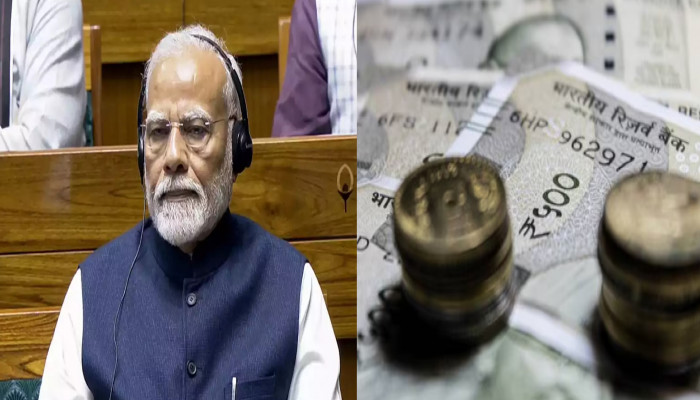Government turns to households to tackle India’s $346 billion debt crisis
- In Reports
- 02:01 PM, Mar 26, 2025
- Myind Staff
Prime Minister Narendra Modi’s government is facing a debt challenge of $346 billion and is looking to households for support. Over the next five years, India needs to repay a record ₹29.7 trillion ($346 billion) in government bonds, mainly due to borrowing during the pandemic and heavy spending on infrastructure. To manage this debt, the Reserve Bank of India and the government are replacing maturing bonds with longer-term ones.
Refinancing debt auctions are gaining popularity, mainly due to the growing role of households. People are investing more money in insurance companies, which are then purchasing large amounts of long-term government bonds. The demand is so high that the head of Life Insurance Corp. of India, the country's largest insurer, even suggested the idea of issuing 100-year bonds.
According to Soumyajit Niyogi, director of India Ratings, a division of Fitch Ratings, "households are looking to deploy their savings pool in instruments that provide a longer-term investment horizon than the conventional banking system." According to him, this change is revolutionising the Indian government securities market. The finance ministry has set a new record by aiming to swap ₹2.5 trillion of debt in the upcoming fiscal year starting April 1.
According to Vidya Iyer, head of fixed income at ICICI Prudential Life Insurance, this target is achievable since the insurance sector is growing steadily at 12-13% per year. ICICI Prudential Life Insurance had assets worth ₹3.1 trillion as of December. The debt swap strategy was successful last year. In the September quarter, the average interest rate on new bonds dropped by 0.2% to 6.9%, while their repayment period extended to 20.5 years, according to the latest government data. “Insurers, keen for longer-term assets to match their liabilities, have piled into these switch operations,” said Ajit Banerjee, chief investment officer at Shriram Life Insurance Ltd. “Given the dearth of quality long-term debt papers in the market, the demand for sovereign notes is here to stay,” he said. To take advantage of this trend, the government has shifted its borrowing towards long-term bonds. In the current financial year, which ends on March 31, 38% of the government's debt issuance consists of bonds with maturities of 30 years or more, compared to 25% four years ago.
New Delhi is expected to announce its borrowing plan for the April-September period this week. For India's public finance managers, this change is a positive development compared to a few years ago, when investors would quickly raise borrowing costs at any sign of increased government debt. However, the government's debt-switching strategy still has challenges. States are borrowing more to fund welfare programs, which could make government bonds less appealing to insurers since state bonds usually offer higher returns.
According to A. Prasanna, chief economist at ICICI Securities Primary Dealership, the true test of demand will take place in the financial year starting April 1, as provinces also increase their sales of long-term debt.
Policymakers feel confident about debt switch auctions because of the strong growth expected in the insurance sector. Experts at Swiss Re predict that India’s insurance market will grow the fastest among G20 nations over the next five years, with 90% of premiums going into investment products. “Demand for long bonds is here to stay and insurance companies will remain the primary players in determining the shape of the yield curve at the long end,” ICICI Prudential’s Iyer said.







Comments